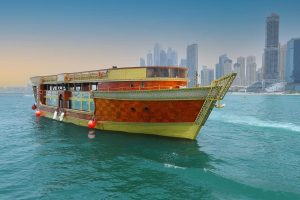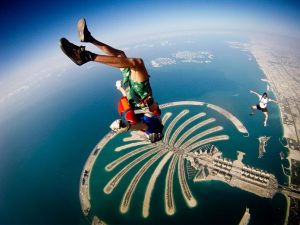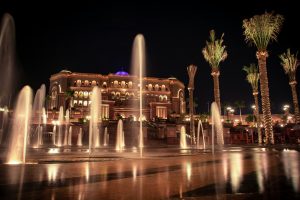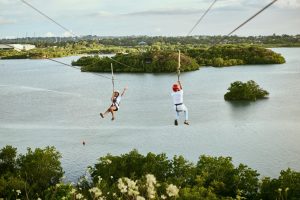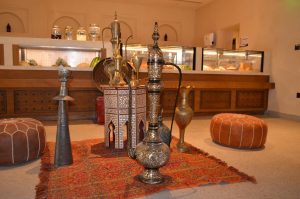
Explore the Al Fahidi Historical District, also known as Old Dubai
The United Arab Emirates (UAE) is a haven for travelers all around the world. Among the attractions that the country has to offer, the alluring city of Dubai always holds a high place. When thinking of a trip to Dubai the first thing that comes into mind would be the towering buildings like Burj Khalifa and luxurious hotels like Burj Al Arab. But, this magical city had very humble beginnings as a trade post in the late 19th century. The Al Fahidi Historical District or Old Dubai is a testament to the old ways of Dubai. You can go for a virtual tour along the cobblestone lanes of this district, observing its wind towers to dig up the cultural treasures and listen to the stories of transformation of a quiet port town into a bustling modern metropolis. Historical Context The Al Fahidi Historical District guides you through the past of Dubai and tells the story of how a primitive trading post has transformed into a modern high tech metropolis. Established in the late 19th century, this neighborhood was a focal point for early settlers who made their fortunes through pearl diving and trading along Dubai Creek. In spite of the city’s dramatic rise, the district has retained its old-world charm. It is a world away from Dubai’s shimmering skyscrapers. Architecture Traditional Arabian architecture, with its wind towers (called barjeel), narrow lanes and ground-floor courtyard houses is another characteristic of Al Fahidi Historical District. Barjeel is the Arabic word for wind towers, which are cultural icons. Buildings of traditional design generally have structures such as these to catch and channel prevailing winds into the building. This provides natural ventilation from scorching desert heat. The visitors can admire the intricate latticework and geometric patterns adorning them and realize what a fine job their builders did. Guarding the entrance to the district is the Al Fahidi Fort of 1787. Though built to protect against external invasion, the fort has been immaculately preserved and converted into a museum in Dubai. A visit inside the museum unfolds the rise of Dubai through artefacts and interactive exhibits as well as multimedia presentations. The contrast between the historic fort and the modern city behind it is a microcosm of Dubai’s willingness to look at its past while embracing the future with open arms. Museums and Cultural Institutions Old Dubai is full of museums and cultural institutions offering glimpses into the city’s history. The emirates’ past is explored in the Dubai Museum within Al Fahidi Fort, which serves as the flagship institution that preserves the history of the emirates. Explore various exhibits in this museum that depict Bedouin life and different traditional activities of the city, like pearl diving. The story of how Dubai rose from a sleepy coastal settlement into today’s global superpower can be read from these exhibits. Art lovers must go to the Majlis Gallery. It is housed in a restored traditional wind tower and displays an eclectic selection of contemporary and traditional Middle Eastern paintings. As you stroll around the busy streets surrounding the gallery, you can take some peaceful time to soak in the tranquil atmosphere of the gallery to enjoy serenity and art. Heritage Houses and Courtyards As you wander down the narrow alleys of Al Fahidi Historical District you will come upon a number of nicely preserved heritage houses and courtyards. For example, explore the Al Ahmadiya School, built in 1912. The school has been restored to its original splendor, and visitors get a feel of the education system of the early 20th century by taking a visit to this school. It’s equipped with antique desks and chalkboards. Another architectural gem is the Sheikh Saeed Al Maktoum House, which reveals just how luxurious Arabian homes of old really were. Built in 1894, this residence belonged to the ruling Al Maktoum family. It features wind towers as well as courtyard gardens and decorated rooms. Each room reflects the stories of a bygone era and the cultural and social norms of that era. Art Galleries and Cultural Hubs Today, the Al Fahidi Historic District has become an important centre of modern art and cultural activities. Every year the district hosts the Sikka Art Fair that showcases local and regional artists. Adding a touch of the modern to this historical setting, artwork installations are intermingled with performances as well. All together, these form an effervescent brew melding past and present. Several art galleries have opened, including XVA Gallery and The Third Line, all playing their part in Dubai’s burgeoning art scene. In such spaces, not only are local artists being promoted, but even more importantly, cross-cultural dialogue is taking place. These places help to create a sense of community for residents and visitors alike. Culinary Delights No exploration of a cultural district would be complete without sampling its cuisine. A number of traditional eating places and cafes catering to all tastes dot the Al Fahidi Historical District. Visitors can enjoy real Emirati food at nearby restaurants, and Al Harees and Al Majboos are prominently on the menu. The fragrant spices and luxurious flavors take the visitors back to a time when these recipes were passed down through generations. If you are not into the traditional Emirati setting, head to some of the trendy cafes and bistros in the district. The region embraces the past and presents gracefully, which is evident in these trendy cafes with a modern aesthetic complemented by the delicious traditional flavours. The Spirit of Community: Embracing Tradition in Modern Dubai Some modern history is limited to dead and inanimate structures of their ancient past. But Old Dubai has a different vibe. It is a living embodiment of what Dubai was before its sudden development into an international city. As visitors walk down its narrow lanes, they can see this liveliness in the locals going about their daily business and children playing in the courtyards. You can experience it in the warm hospitality of shopkeepers. The sense of community that generations


